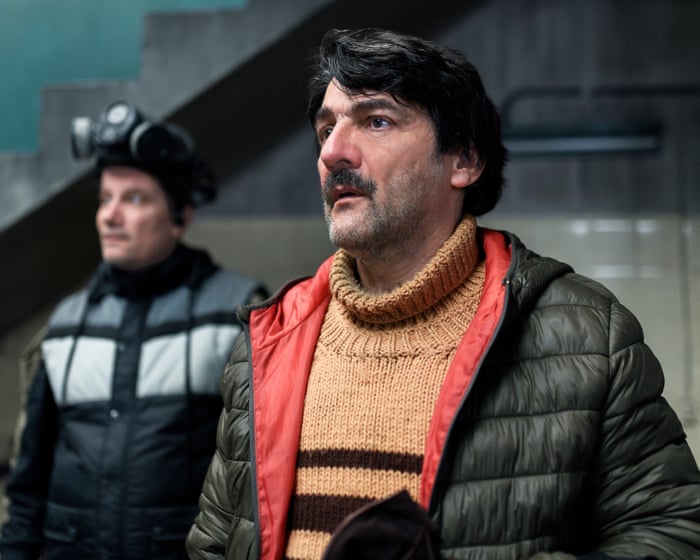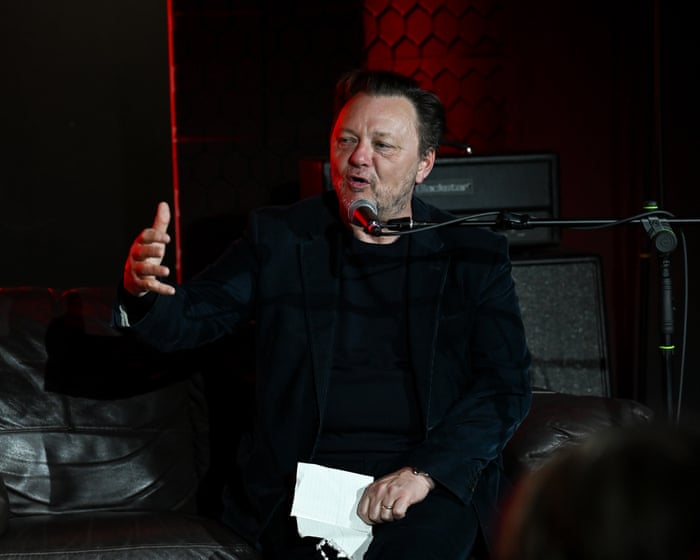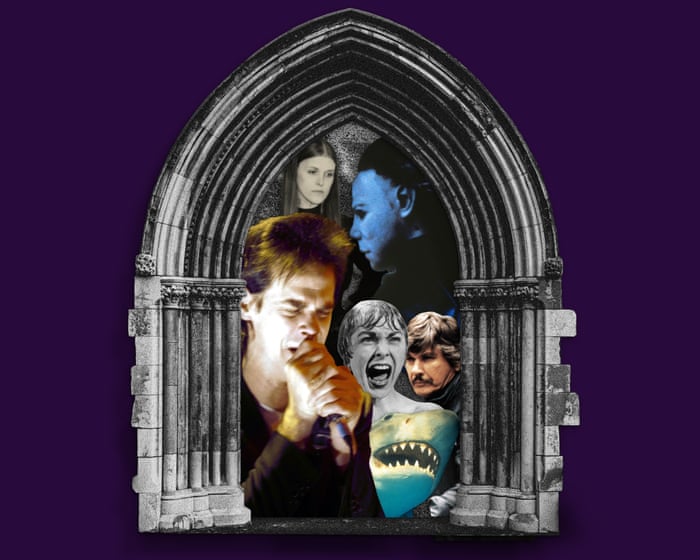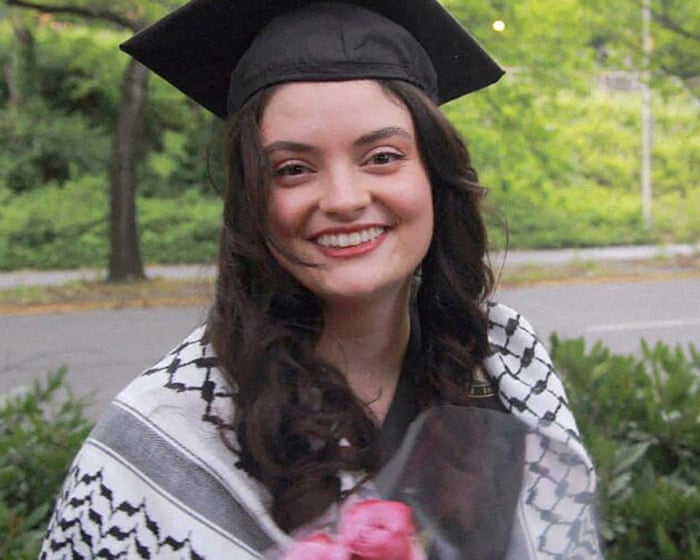I’m embarrassingly late to The Eternaut (El Eternauta), the Argentinian dystopian thriller that hit Netflix way back in April. I binge-watched all six episodes of the first season just a few weeks ago, after hearing a glowing review on The Watch podcast (which was also late to the party, making me feel slightly less out of touch). And wow—it’s fantastic. This end-of-the-world chiller is deeply grounded in Argentina’s socio-political reality, despite its wild premise: Buenos Aires under siege by an unnatural snowfall that turns out to be deadly.
That realism is baked into the story’s DNA. The show is based on Héctor Germán Oesterheld’s 1957 comic of the same name, which eerily foreshadowed the civil unrest and authoritarianism that would grip Argentina in the decades to come. Of course, the cause is different—in the comic and show, an alien invasion triggers the deadly snow, while in real life, it was a military dictatorship. But the effects are hauntingly similar: societal distrust, paranoia, and violence. Tragically, Oesterheld himself became a victim of the turmoil he imagined. After joining a leftist group opposing Argentina’s military junta, he, along with his four daughters (two pregnant at the time) and four sons-in-law, were “disappeared” in 1977. A new effort to find his family was launched after Netflix’s adaptation aired.
The show keeps overt politics subtle, but they simmer beneath the surface. The protagonist, Juan (played by veteran Argentinian actor Ricardo Darín), has been aged into his 60s—old enough to remember the junta’s rule and feel the chilling weight of history repeating. He’s haunted by memories of the Falklands War, still a raw wound for many. And with Argentina now under a hyper-individualist right-wing government, the show’s emphasis on collective survival resonates deeply. (Though its message of solidarity takes a hit in one scene that controversially uses generative AI.)
The Eternaut is part of a growing wave of foreign-language dystopian and post-apocalyptic series finding eager audiences among English-speaking viewers. Once, cities like Seoul, Cairo, or Buenos Aires only appeared in Hollywood disaster films as collateral damage—blown up or overrun to show the threat facing real (read: American) cities. Now, thanks to streaming, we get to see other countries’ own terrifying visions of societal collapse.
And those visions come in all forms. In Korea’s Black Knight (Netflix), air pollution has turned oxygen into a luxury commodity hoarded by elites. The Dutch series Arcadia (Channel 4) depicts a surveillance state where “citizenship scores” dictate quality of life. Agnieszka Holland’s 1983 (Netflix) imagines a Poland where communist rule lasted into the 2000s, creating a brutal police state. Meanwhile, Nigeria’s Iwájú (Disney+), Spain’s The Barrier, and Brazil’s 3% (both on Netflix) all explore futures where the privileged wall themselves off from a crumbling society.
It’s no coincidence that many of these shows are on Netflix. The platform’s global reach has made it a hub for dystopian storytelling from around the world—and audiences are eating it up.The streaming giant’s global expansion has led to heavy investments in original programming across countries from Turkey to Taiwan. In many of these regions, the result has been dystopian dramas—a genre that likely appeals to global audiences, according to the platform’s powerful algorithm. This makes sense: the fear of the world ending is universal. What fascinates me most about these shows is their hyper-local feel, deeply rooted in each country’s traditions, styles, and concerns.
Take Families Like Ours, available on BBC iPlayer, which explores a very real threat to Denmark—rising sea levels—and takes it to terrifying (some say impossible) extremes. The show imagines Denmark’s entire population of six million forced to flee as climate refugees. The story unfolds in a strikingly matter-of-fact way, with characters reacting to each grim development with numb resignation, like frogs in slowly boiling water. Directed by Thomas Vinterberg (Festen, The Hunt), a veteran of Denmark’s Dogme 95 movement, the series applies his signature deadpan style to a deeply serious subject. The result feels worlds apart from traditional disaster films, grounded in Danish cinematic traditions and fueled by the country’s deepest fears.
The same goes for The Eternaut. A second and final season is in production, though it won’t arrive until 2027. Rest assured, I won’t be nearly as late to watch it this time.
Want the full version of this newsletter? Subscribe to The Guide for free every Friday.
(Newsletter sign-up disclaimer: By subscribing, you acknowledge that newsletters may include information about charities, ads, and third-party content. For details, see our Privacy Policy. We use Google reCAPTCHA for security, subject to Google’s Privacy Policy and Terms of Service.)
FAQS
### **FAQs About Guide #204: Locally Made Dystopian TV Shows Taking the World by Storm**
#### **Basic Questions**
**1. What is a dystopian TV show?**
A dystopian TV show is a series set in a dark, often futuristic world where society is oppressive, chaotic, or controlled by extreme forces.
**2. Why are locally made dystopian shows becoming popular?**
They offer fresh perspectives, cultural authenticity, and often critique real-world issues in ways that resonate globally.
**3. Which countries are producing these shows?**
Countries like South Korea, Germany, Brazil, and Nigeria are creating standout dystopian series.
#### **Recommendations & Examples**
**4. What are some must-watch locally made dystopian shows?**
Examples include *Squid Game*, *Dark*, *3%*, and *Ajoche*.
**5. Are these shows available on mainstream platforms?**
Yes, many are on Netflix, Amazon Prime, and other streaming services.
#### **Themes & Impact**
**6. What common themes do these shows explore?**
They often tackle inequality, government control, survival, and the consequences of technology.
**7. How do these shows differ from Hollywood dystopian series?**
They often reflect local cultures, histories, and social issues, making them feel more unique and relatable to their audiences.
**8. Are these shows only for fans of sci-fi and dark themes?**
Not always—many blend drama, thriller, and even satire, appealing to a wide audience.
#### **Production & Cultural Influence**
**9. Why are smaller production teams succeeding with dystopian stories?**
Lower budgets can lead to more creative storytelling, and local talent brings authenticity.
**10. How do these shows impact global TV trends?**
They prove that great storytelling transcends borders, encouraging more diverse content worldwide.
#### **Viewer Tips**
**11. Where can I find hidden gem dystopian shows?**
Check international streaming sections, film festivals, or recommendations from critics.
**12. Do these shows have subtitles or dubbing?**
Most major platforms offer subtitles, and some have dubbed versions.
**13. Are there lighthearted dystopian shows, or are they all dark?**
Some




